Step 3 of 11 (27% complete)
Configuration in Feature Exp
Setting Up Your Optimizely Project
-
Create a Project:
- Log in to your Optimizely account
- Navigate to "Projects" and click "Create New Project"
- Select "Feature Experimentation" as the project type
- Name your project and complete the setup wizard
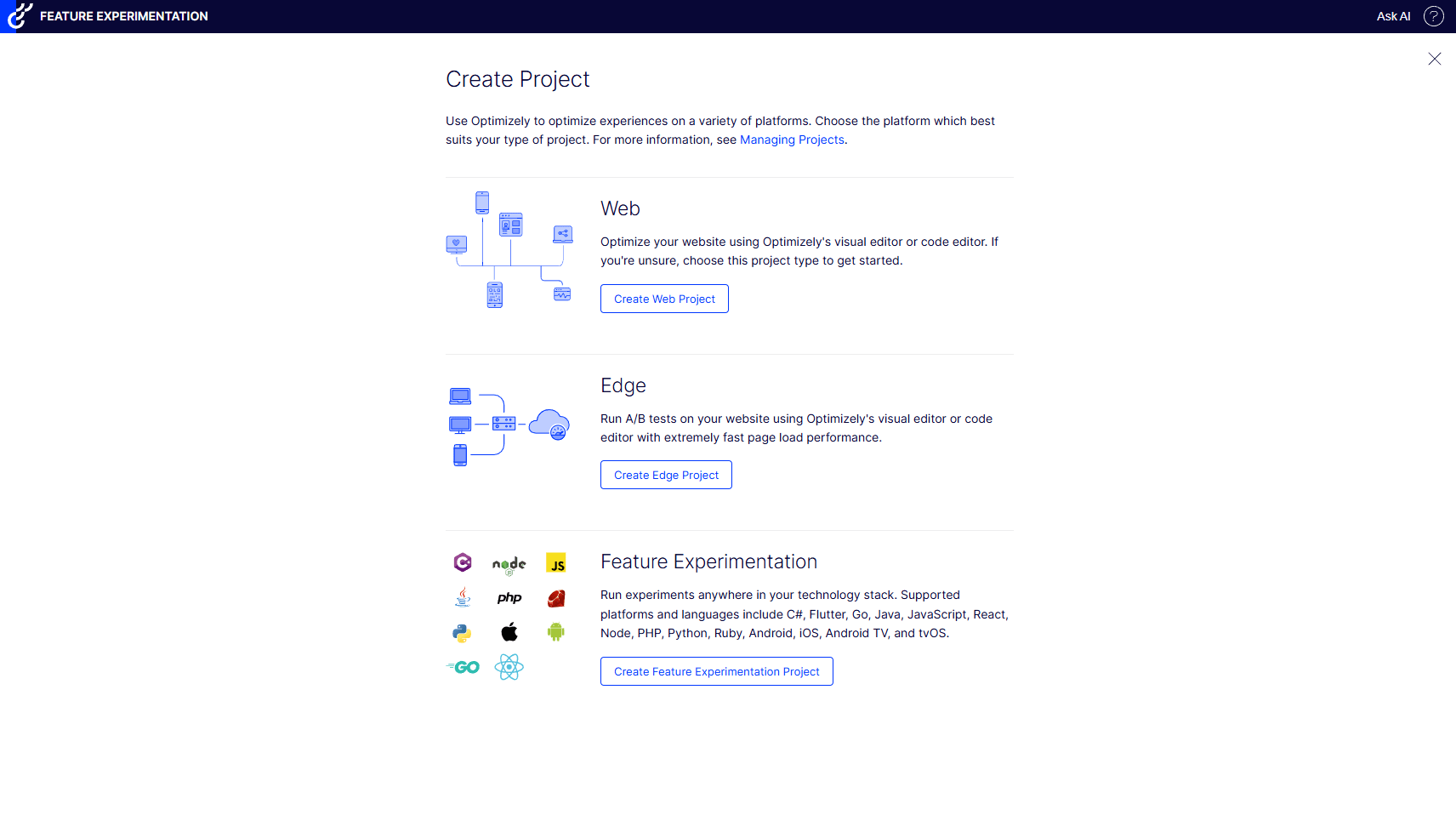
-
Set Up Events:
- Navigate to "Events" in your project
- Define key actions users take that you want to track (e.g., "cta_clicked")
- These events will serve as metrics for your experiments
Below is an event that I have configured for the course:
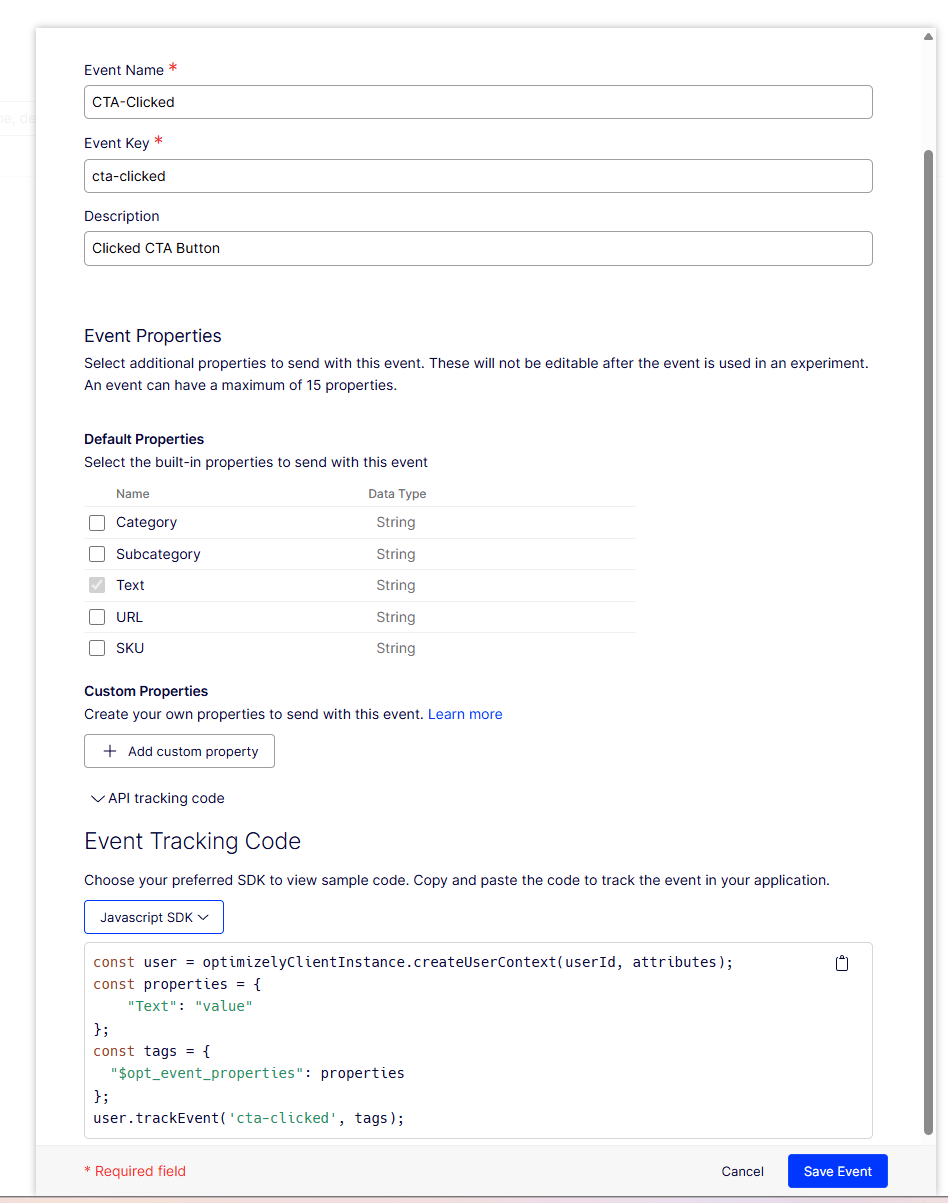
- Create Flags:
- Go to "Flags" in your project
- Click "Create Flag" and provide a name and key
- Name: Opticon-Portfolio-demo
- Key: Automatically populated based on the name, so you do not have to enter anything.
- (Optional) Description: Controls the visibilty and behavior of new features across Opticon Portfolio's website, with content managed through Optimizely CMS (SaaS) and Optimizely Graph.
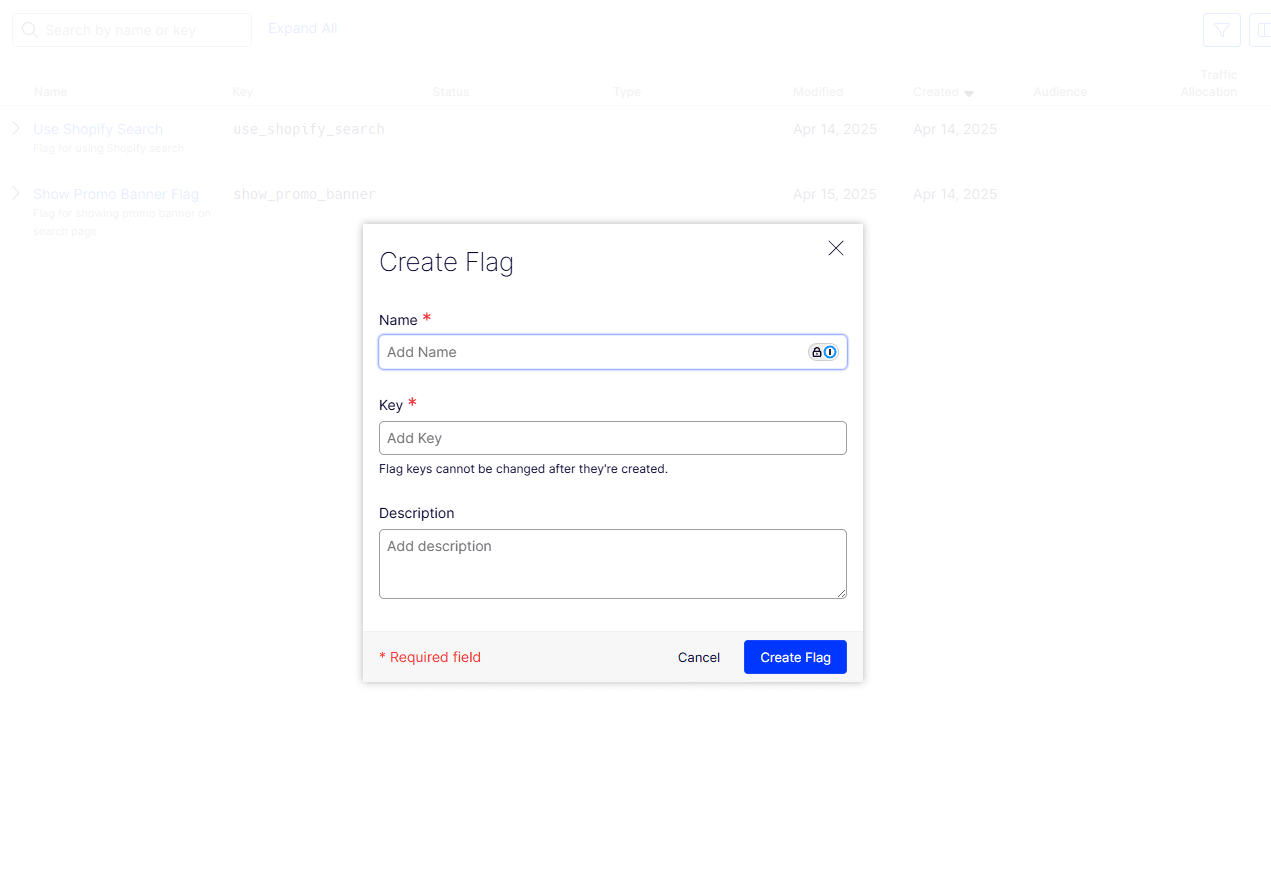
- Create flag variables and variations
Variables are dynamic values you configure in Feature Experimentation that control what content your front end displays. In this integration, the variables map directly to variation names in CMS (SaaS). You create the corresponding variations in CMS (SaaS) later.
This integration uses the following:
- Feature Experimentation variations - Defines how users are bucketed in the experiment.
- Feature Experimentation variables - Provides the variation key used in your frontend logic.
- CMS (SaaS) content variations - Contains the actual content to display, queried from Optimizely Graph using the variation key.
To add a flag variable, complete the following:
- Click Variables in the flag you previously created or selected.

- Click Add variable and select String
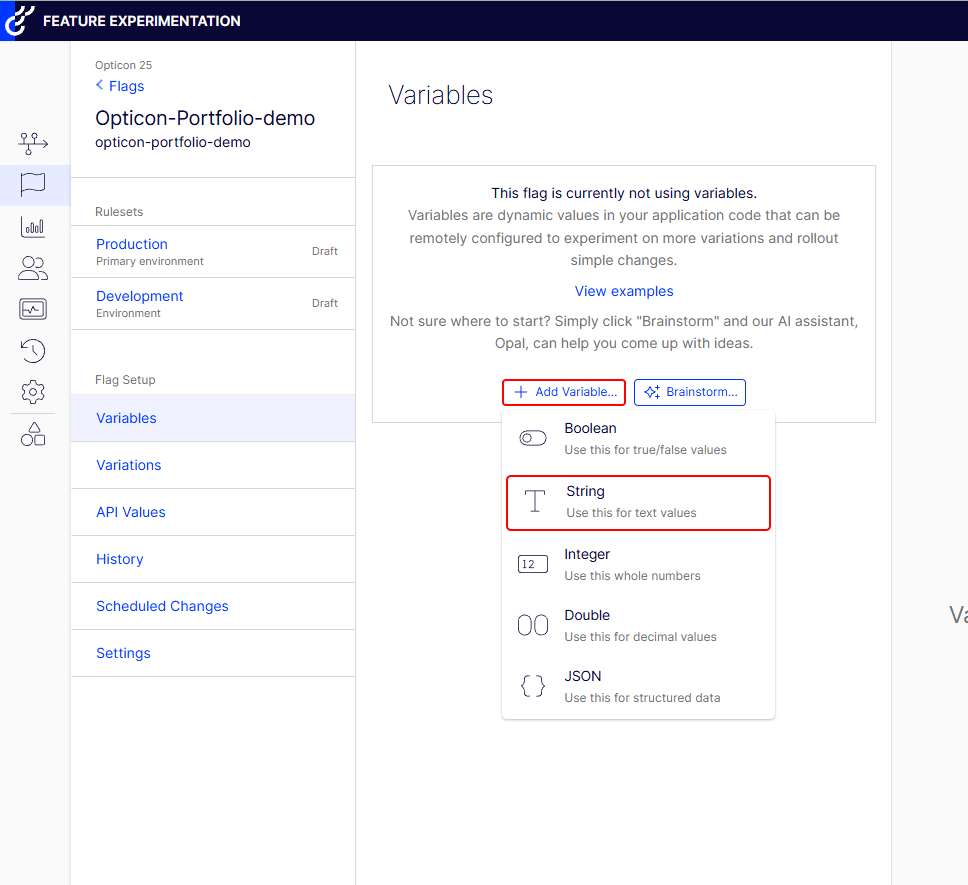
a) Enter cms-saas-content-variation in the Name field on the Configure String Variable page.
b) (Optional) Enter a Description
c) Enter Original for the Default Value.
d) Click Save.
Example variable config:
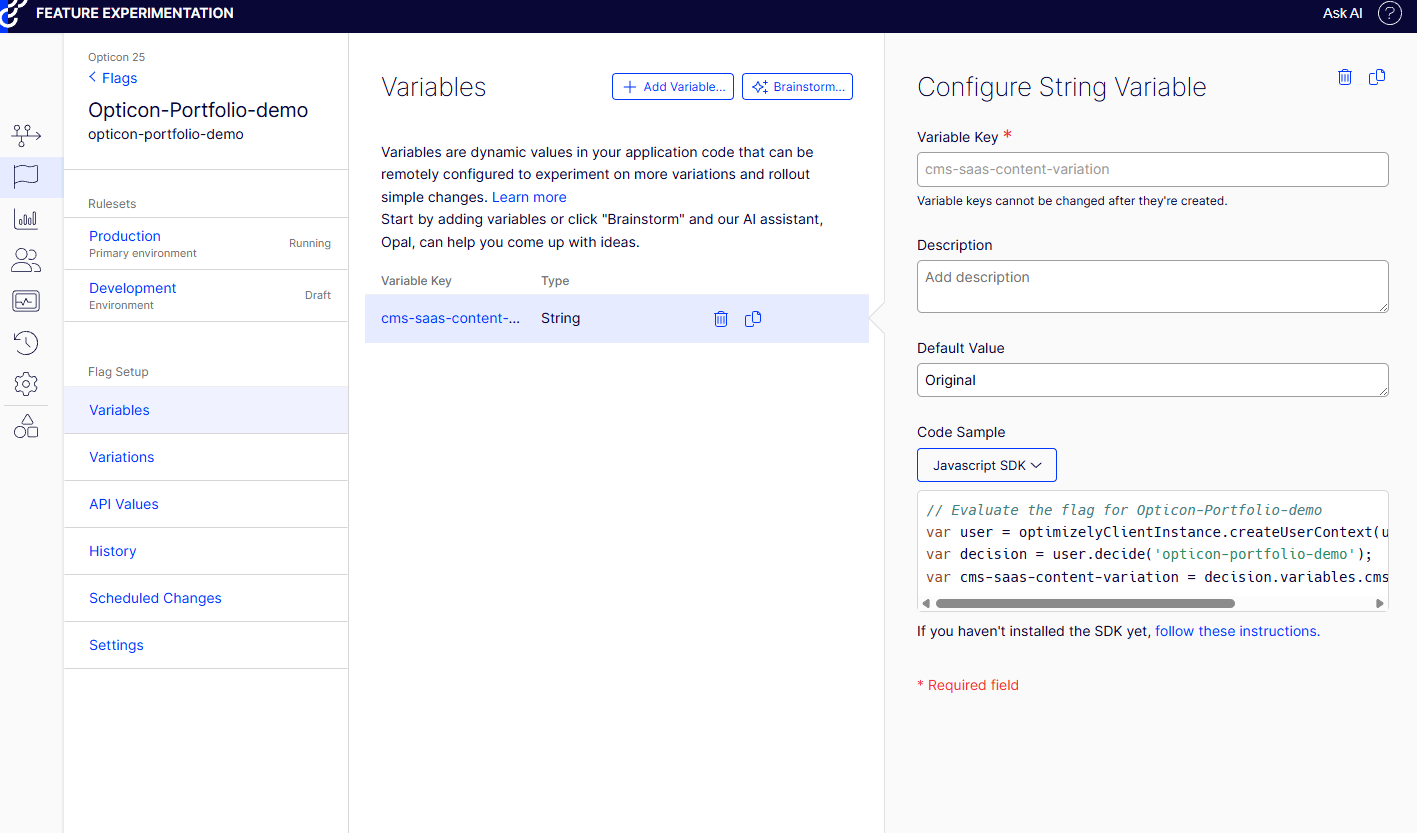
- Add variations
- Go to Variations
- click Add variations
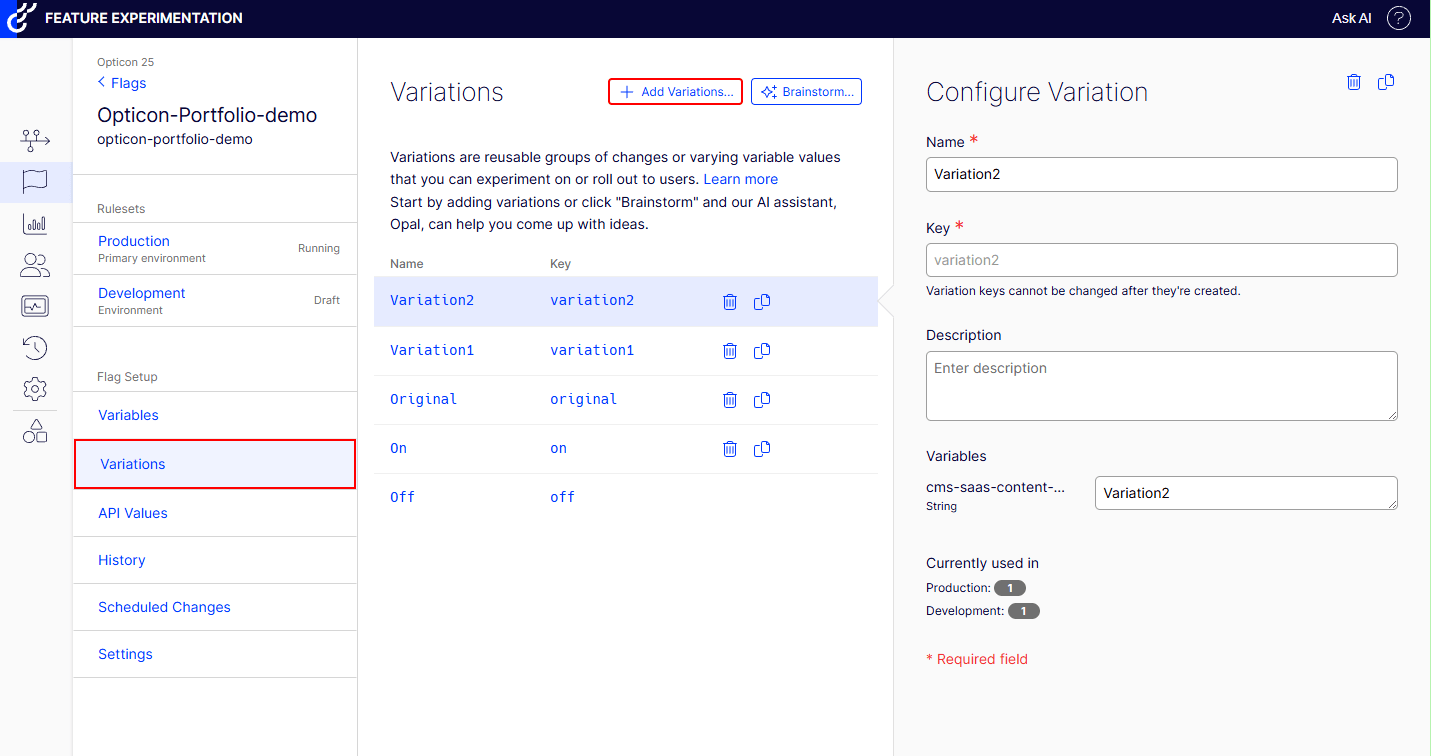
- add the following three or more variations
- Original
- Variation1
- Variation2
For each variation, enter the same value for the Name and cms-saas-content-variation fields. For example, the first variation has a Name of Original and cms-saas-content-variation value of Original. Also, keep the default Key, and optionally enter a Description. The following image shows what your Variations page should look like:
Original:
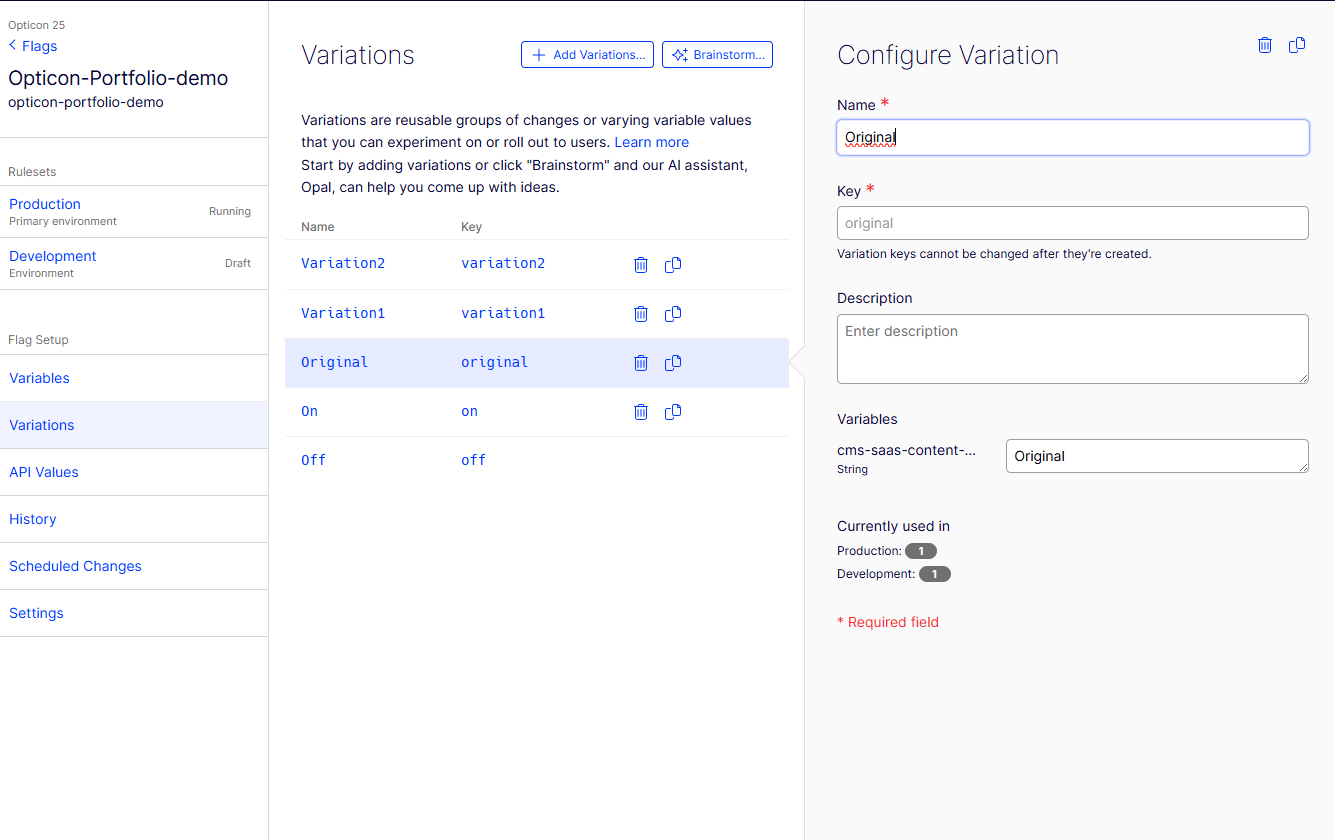
Variation1:
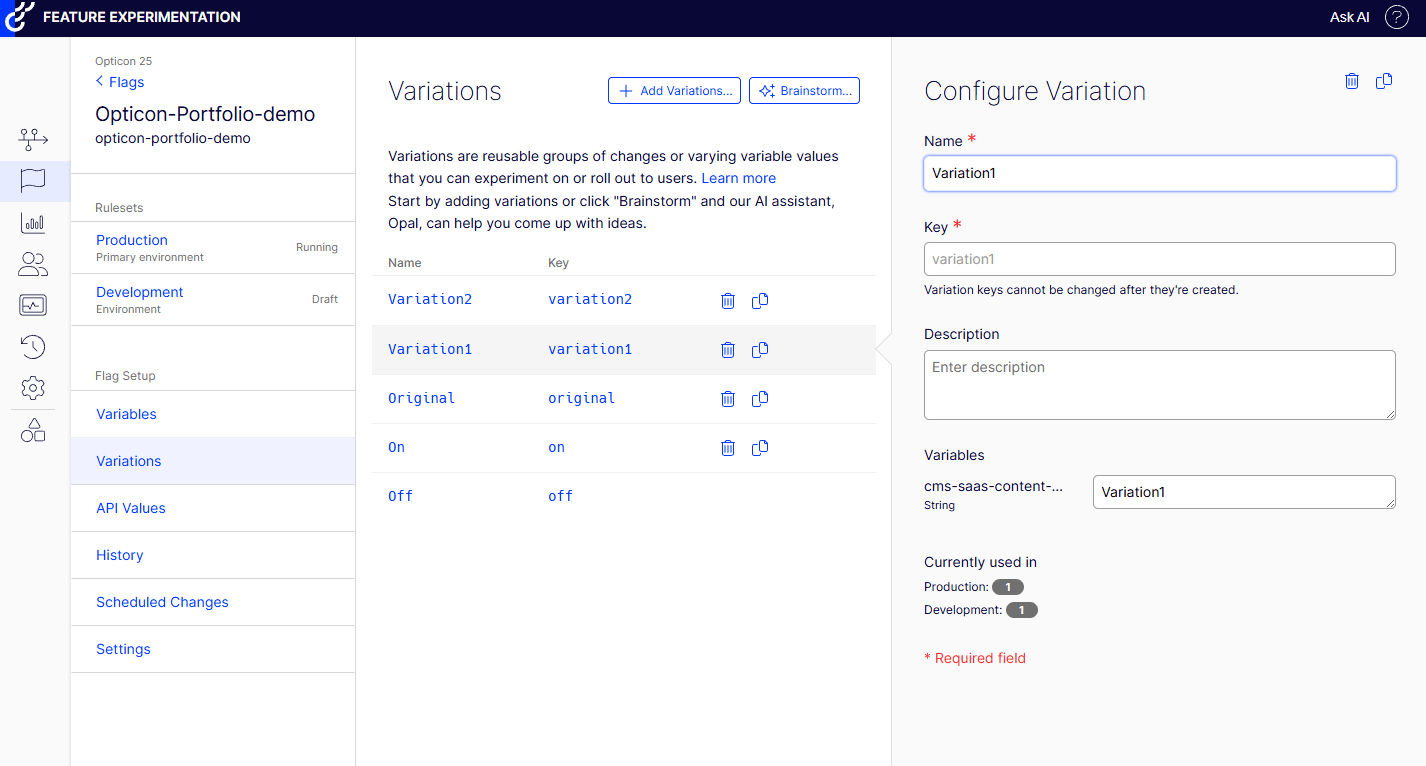
Variation2:

- Create an A/B test rule
-
Click Add rule and select A/B Test in the Development or Production environment.

-
Configure your rule with the following information:
- Name – Enter "Opticon-Demo-Content-Test"
- Key – Keep the automatically created key.
- Audience – Keep Everyone.
- Traffic Allocation – Keep at 100%.
- Primary metric – Select a metric you already created in point 2.
- Distribution Mode – Keep Manual.
- Variations – Add the Original, Variation1, Variation2 you created previously.
- Exclusion Group – Do not add an exclusion group.
Example:
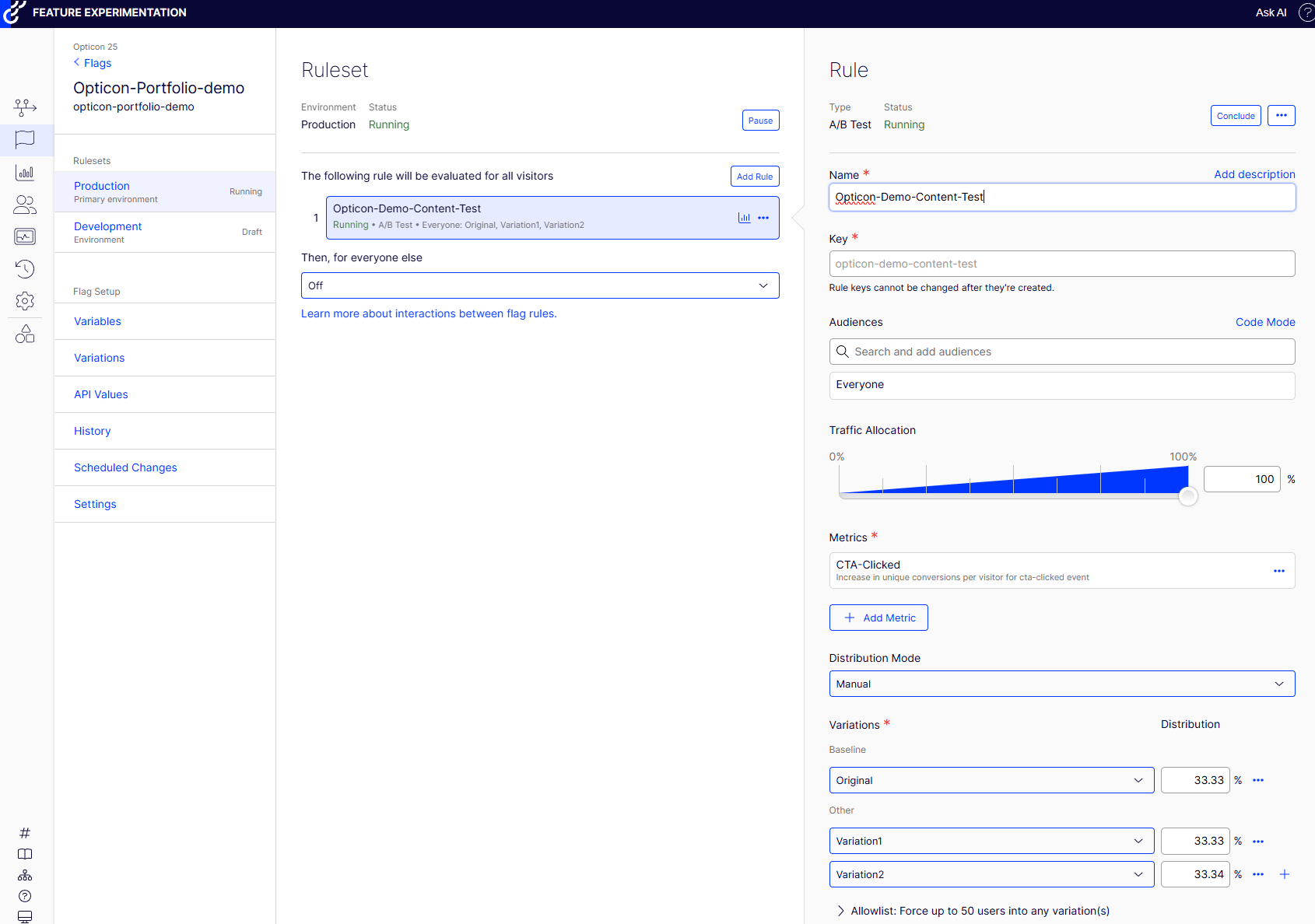
- Click Save.
- Run your flag and rule
Configuration made base on Optimizely docs
Have questions? I'm here to help!